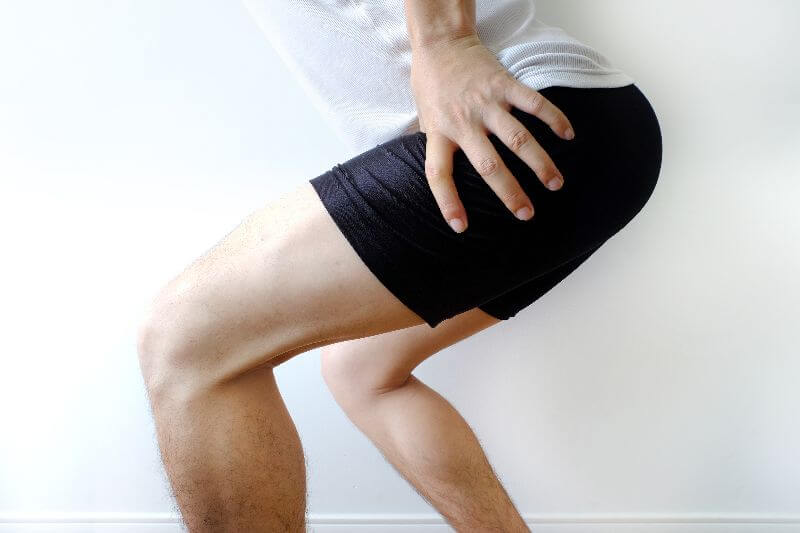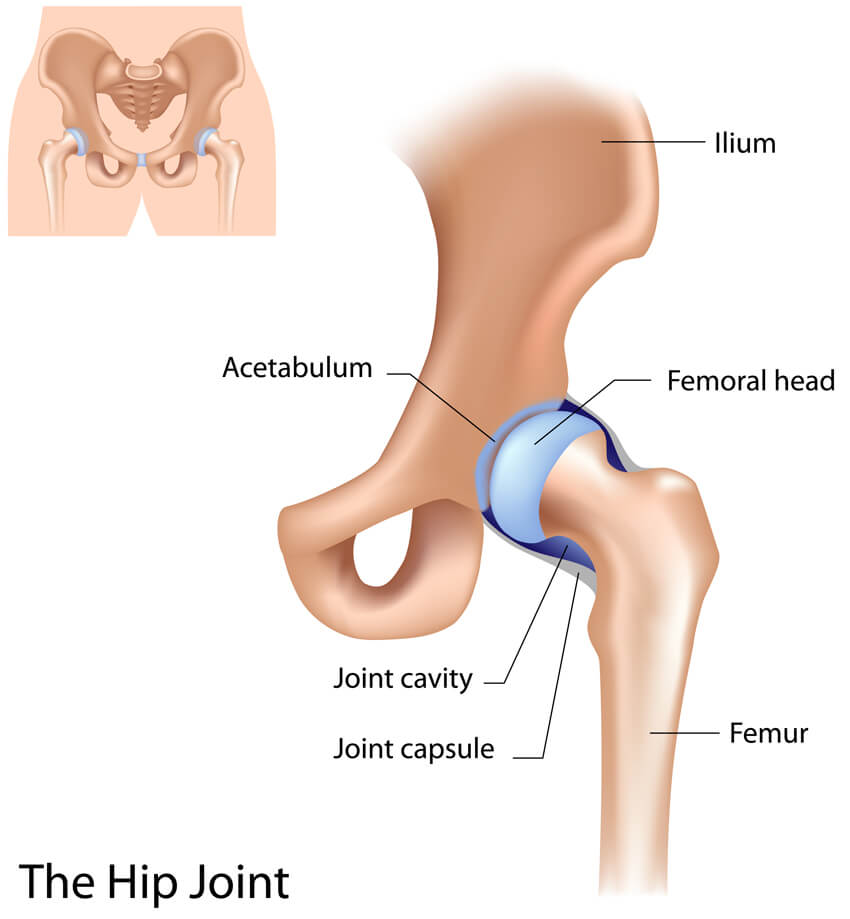Several hip injuries and conditions can affect the soft tissues in the hip joint, affecting mobility and function.
The hip is a “ball and socket” joint, so named because the ball-shaped end of the upper thighbone (femur) fits into a socket in the pelvic bone. The ligaments and other soft tissues surrounding the joint aid in stability and mobility.
- Articular cartilage lines the joint surface and helps to reduce friction when moving the hip.
- The labrum is a ring of cartilage located on the outside rim of the hip socket. It creates a tight seal to hold the ball portion of the joint in place and helps to lubricate the joint.
- Ligaments surrounding the hip form a capsule to provide further stability. The capsule is lined with the synovial membrane, which secretes a fluid to lubricate the joint.
All of these elements work together to aid in hip function. Any injuries to these structures in the joint can affect normal hip function.
Common hip injuries include dysplasia, hip impingement, labral tear, and snapping hip syndrome.
Dysplasia is a condition caused by abnormal bone formation, and it is often congenital, meaning it is present at birth. Dysplasia occurs when the femoral head does not fit securely within the socket. The labrum bears the additional stress of keeping the femoral head in the socket, eventually resulting in a labral tear.
Femoroacetabular Impingement (FAI) occurs when bone protrusions called CAM and pincer lesions develop in the hip, giving the bones an irregular shape. These abnormalities can be congenital (present at birth) or may develop from repetitive trauma during sports activity. FAI affects motion within the joint and causes the bones to rub together abnormally. This can lead to pain in the groin area and hip and may also result in stiffness and limping. Eventually, a labral tear may occur.
A labral tear of the hip often occurs due to sudden injury or repetitive motion. CAM and pincer lesions (structural abnormalities) can also increase the likelihood of developing a labral tear. A labral tear can cause pain in the hip or groin and stiffness and limited range of motion in the hip. Patients may also experience other labral tear symptoms, including locking, clicking, or catching sensations in the hip.
Snapping Hip Syndrome occurs when a muscle or tendon rubs against one of the hip bones, creating a snapping or popping sensation. Eventually, repetitive rubbing can cause inflammation and pain.
Arthroscopic hip surgery is a minimally invasive surgical procedure recommended for patients whose hip conditions do not improve with nonsurgical treatment, such as rest, medication, and physical therapy.
Hip arthroscopy is performed to treat various hip injuries and conditions, including labral tears, hip impingement, synovitis, bursitis, and snapping hip syndrome. Because hip arthroscopy is less invasive than open surgery, recovery time is quicker.
During arthroscopy, your orthopedic surgeon makes 2 to 3 small incisions to insert the arthroscope. The arthroscope is a small camera that displays images from inside the joint on a video screen. Other small incisions are made to insert operating instruments and perform the surgery. Depending on your condition, your surgeon may repair a torn labrum, remove inflamed synovial tissue, smooth out damaged cartilage, or remove bone spurs during the procedure.
Recovery from hip arthroscopy is generally quicker than recovery from open hip surgery. Arthroscopy allows your surgeon to view your hip and perform the surgery through small incisions. Smaller incisions result in less pain after surgery, which helps patients participate in rehabilitation exercises more easily. Physical therapy is an integral part of recovery to restore strength, function, and mobility.
On average, the majority of patients can return to normal activities in about 3 to 4 months.
If damage to the hip cannot be completely reversed or repaired through arthroscopy, additional procedures or activity modification may be recommended. Your orthopedic surgeon will work with you to determine the best course of action moving forward.
At OrthoMed Center, our orthopedic surgeons offer hip arthroscopy to treat various hip injuries and conditions, including dysplasia, hip impingement, labral tears, and snapping hip syndrome. Our orthopedic surgeons have extensive experience in hip arthroscopy.
If you would like to schedule an appointment with one of our surgeons to discuss hip arthroscopy, call OrthoMed Center at (209) 524-4438. You may also request an appointment online.




